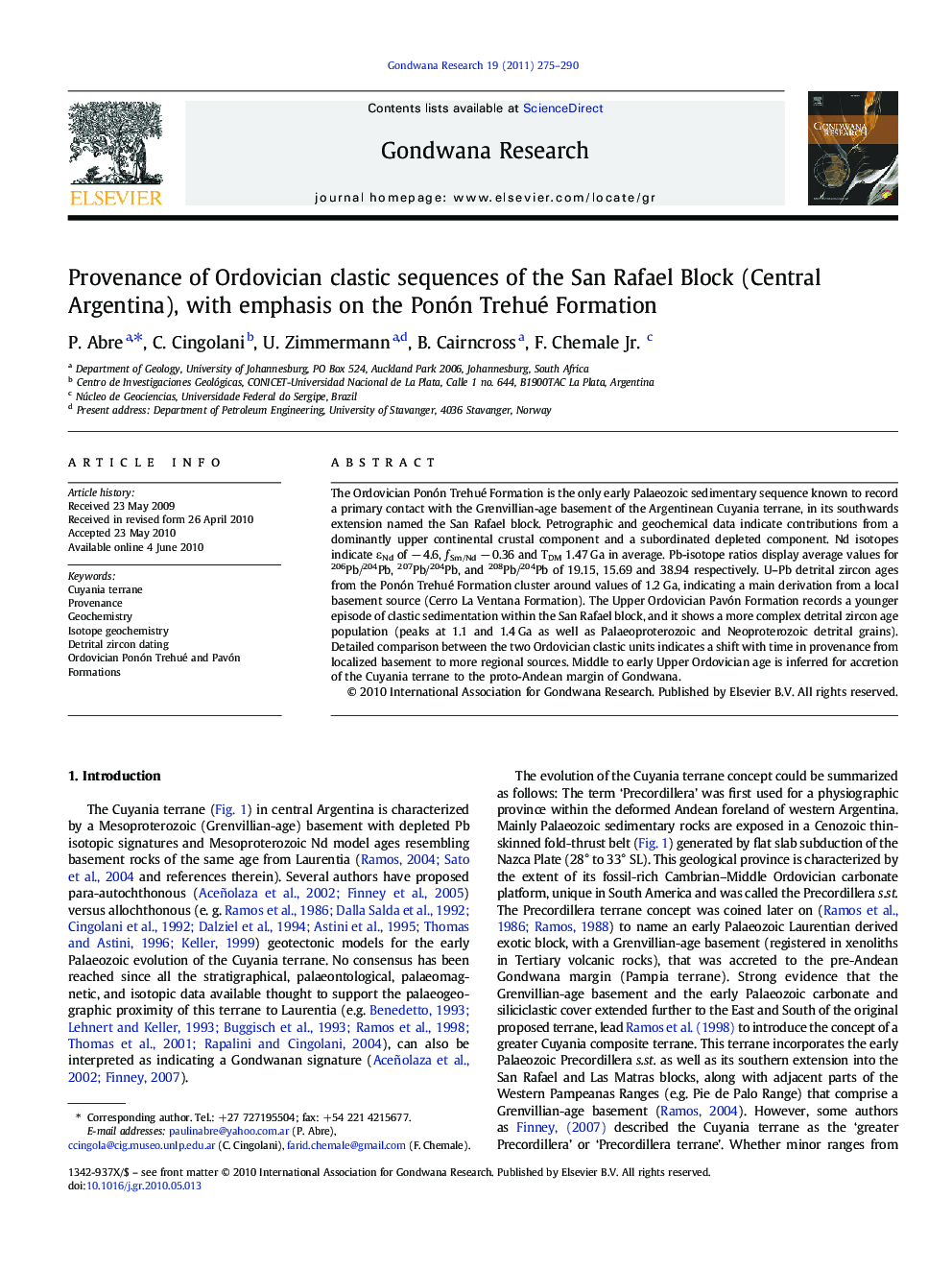| Article ID | Journal | Published Year | Pages | File Type |
|---|---|---|---|---|
| 4727765 | Gondwana Research | 2011 | 16 Pages |
Abstract
The Ordovician Ponón Trehué Formation is the only early Palaeozoic sedimentary sequence known to record a primary contact with the Grenvillian-age basement of the Argentinean Cuyania terrane, in its southwards extension named the San Rafael block. Petrographic and geochemical data indicate contributions from a dominantly upper continental crustal component and a subordinated depleted component. Nd isotopes indicate εNd of â 4.6, ÆSm/Nd â 0.36 and TDM 1.47 Ga in average. Pb-isotope ratios display average values for 206Pb/204Pb, 207Pb/204Pb, and 208Pb/204Pb of 19.15, 15.69 and 38.94 respectively. U-Pb detrital zircon ages from the Ponón Trehué Formation cluster around values of 1.2 Ga, indicating a main derivation from a local basement source (Cerro La Ventana Formation). The Upper Ordovician Pavón Formation records a younger episode of clastic sedimentation within the San Rafael block, and it shows a more complex detrital zircon age population (peaks at 1.1 and 1.4 Ga as well as Palaeoproterozoic and Neoproterozoic detrital grains). Detailed comparison between the two Ordovician clastic units indicates a shift with time in provenance from localized basement to more regional sources. Middle to early Upper Ordovician age is inferred for accretion of the Cuyania terrane to the proto-Andean margin of Gondwana.
Related Topics
Physical Sciences and Engineering
Earth and Planetary Sciences
Geology
Authors
P. Abre, C. Cingolani, U. Zimmermann, B. Cairncross, F. Jr.,
